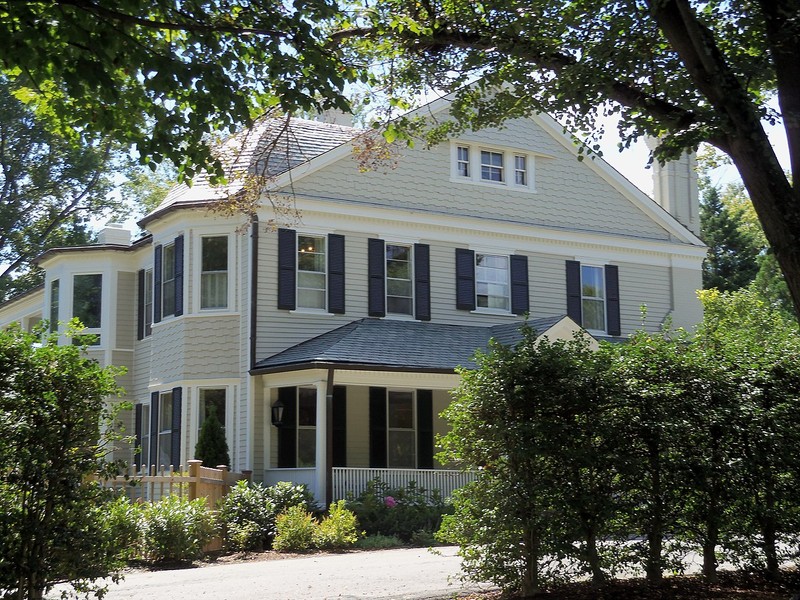Salmon-Stohlman House
Introduction
Text-to-speech Audio
This historic home was built around 1893 for the family of Dr. Daniel Salmon (1850-1914) the first person in the United States to earn a doctorate in veterinary medicine. Salmon's contributions include identifying the bacteria salmonella, which was later named in his honor. Dr. Salmon lived in the home in 1902 when it was sold to John William Stohlman who served as Somerset mayor from 1919 to 1938. Stohlman raised a large family of ten children. Still a private residence today, the was added to the National Register of Historic Places in 2002.
Images
The Salmon-Stohlman House is named after its builder, Dr. Daniel Salmon, and second owner and mayor of Somerset from 1902 to 1947, John Williams Stohlman.

Dr. Daniel Salmon (1850-1914)
.jpg)
Backstory and Context
Text-to-speech Audio
Somerset Colony
Dr. Salmon played a role in developing the neighborhood and encouraging people to migrate from northwest Washington D.C. to Montgomery County. In the early 1890s, he and four other scientists formed the Somerset Colony Company to create a residential, suburban "colony" outside of Washington D.C. Each bought a 50-acre property and built a home. They chose this area to develop Somerset for its picturesque setting and the fact that it was next to three streetcar lines. They advertised the colony to professionals in the city and offered them large, one-acre lots (the colony as a whole was 192 acres).
Dr. Daniel Salmon
Dr. Salmon was born on a farm in July 1850 in Mount Olive, New Jersey. He worked as a clerk in a country store as a teenager then enrolled at Cornell University, joining the university's first freshman class. He studied veterinary medicine over the next four years and that included a semester at the Alfort Veterinary School in Paris. He graduated in 1872 and practiced in New Jersey then in North Carolina. He earned his doctorate from Cornell in 1876 and three years later joined the staff at the university.
Six months later, he began a long career at the U.S. Department of Agriculture where he studied animal diseases, beginning with Texas cattle fever. In 1885, Salmon and his assistant Theobald Smith discovered a strain of bacteria (salmonella) in hogs that a French bacteriologist later named in honor of Dr. Salmon. Other accomplishments of Salmon's career include eradicating the pleuro-pneumonia from cattle, establishing the federal meat inspection service, and instituting the inspection of exported and imported animals. Dr. Salmon served as director of the Bureau of Animal Industry for twenty years. In his later years, he moved to Uruguay in 1906 to establish and head the veterinary department at the University of Montevideo. Salmon came back to the U.S. in 1911 and settled in Butte, Montana where he managed a hog serum company. He died in August 1914, and his body was sent to Washington D.C. where it was buried in Rock Creek Cemetery.
Sources
"Daniel E. Salmon." Special Collections, USDA National Agricultural Library. Accessed May 15, 2023. https://www.nal.usda.gov/exhibits/speccoll/items/show/8203.
Monte, D. M., & Sellera, F. P. (2020). Salmonella. Emerging Infectious Diseases, 26(12), 2955. hhttps://wwwnc.cdc.gov/eid/article/26/12/et-2612_article.
Williams, Kimberly Prothro. "Salmon-Stohlman House." National Park Service - National Register of Historic Places Nomination Form. April 11, 2002. https://mht.maryland.gov/secure/medusa/PDF/NR_PDFs/NR-1277.pdf.
Wikimedia Commons: https://commons.wikimedia.org/wiki/File:Salmon-Stohlman_House.JPG
